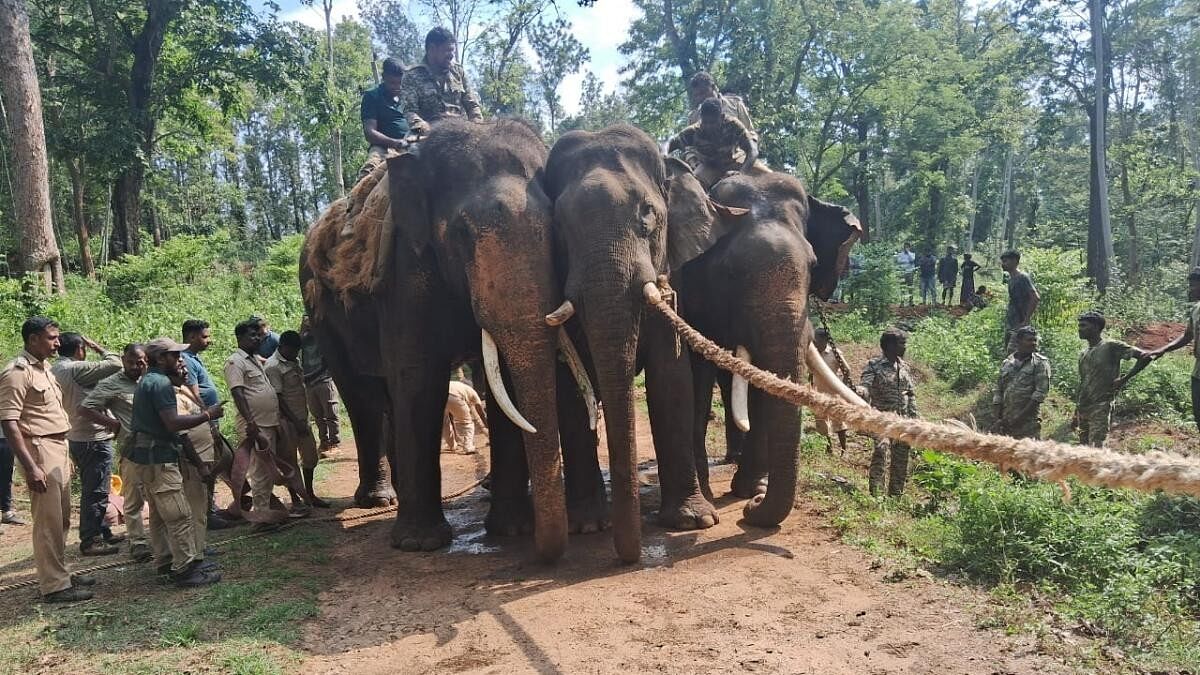
Forest department personnel with elephants in Siddapur area of Kodagu.
Credit: DH Photo
Bengaluru: Faced with rising numbers of man-elephant conflict, Karnataka, Kerala and Tamil Nadu will take up a synchronised population estimation exercise of the wildlife in the interstate region to understand the population dynamics and potential conflict scenarios which will help manage the issues in a holistic manner.
In the last five months, 22 persons have been killed by elephants while two elephants have died of unnatural causes. About 150 persons have been killed in the last six years.
The three states together formed an interstate coordination committee to assess the elephant movement across the Nilgiri Biosphere Reserve for which a charter was signed by the respective forest ministers and senior officials in March this year.
In a release, Forest Minister Eshwar Khandre said the synchronised estimate was “crucial” for designing the conflict management strategies. Officials will take up the exercise in Karnataka, Kerala, Tamil Nadu and Andhra Pradesh on 23, 24 and 25 of May 2024, it said.
The exercise will be conducted in 10 Forest divisions of Karnataka, located on the interstate boundary with Kerala, Tamil Nadu and Andhra Pradesh. “The divisions in which the exercise will be conducted are Kolar, Cauvery Wildlife, MM Hills Wildlife, BRT Tiger Reserve, Bannerghatta National Park, Bandipur Tiger Reserve, Nagarahole Tiger Reserve, Madikeri Territorial, Madikeri Wildlife and Virajpet. This includes 65 forest ranges and 563 beats and engaging 1689 of manpower over 3 days,” the release said.
The exercise comprises block sampling or direct count exercise on the first day. Here, officials will use data of the beats that have elephant presence as collected during the exercise in 2023. About 50% of such beats will be chosen randomly within which sample blocks of 5 sqkm will be selected from each forest division.
A team of two or three people would systematically survey each of the selected blocks and walk a minimum of 15 km to cover a 5 sq km block and record all elephant sightings. The area of each sample block is to be marked on a map and recorded correctly. The staff has to record the age and sex of all animals seen, whenever possible.
On the second day, officials will take up line transects exercise where they will walk on the lines (2 km length) marked across the division. Here elephant dung piles on either side of the line will be recorded. The perpendicular distance of the dung pile from the line and the freshness of the dung pile (less than 24 hours, more than 24 hours) are recorded.
While the first two exercises are aimed at abundance estimation, officials will also record information on the forest cover, land use and the field data, current elephant use/distribution area, mean elephant density and number of elephants.
On the third day, waterhole direct count exercise will be taken up with photographic evidence. The waterholes/salt licks/open areas with maximum use by elephants are identified. A fixed-point observation is undertaken for elephants from 6 am to 6 pm at these selected locations. The size of the herd, age and gender of the individuals is recorded. This data is used to assess the age and sex distribution (demography) of the elephant populations.